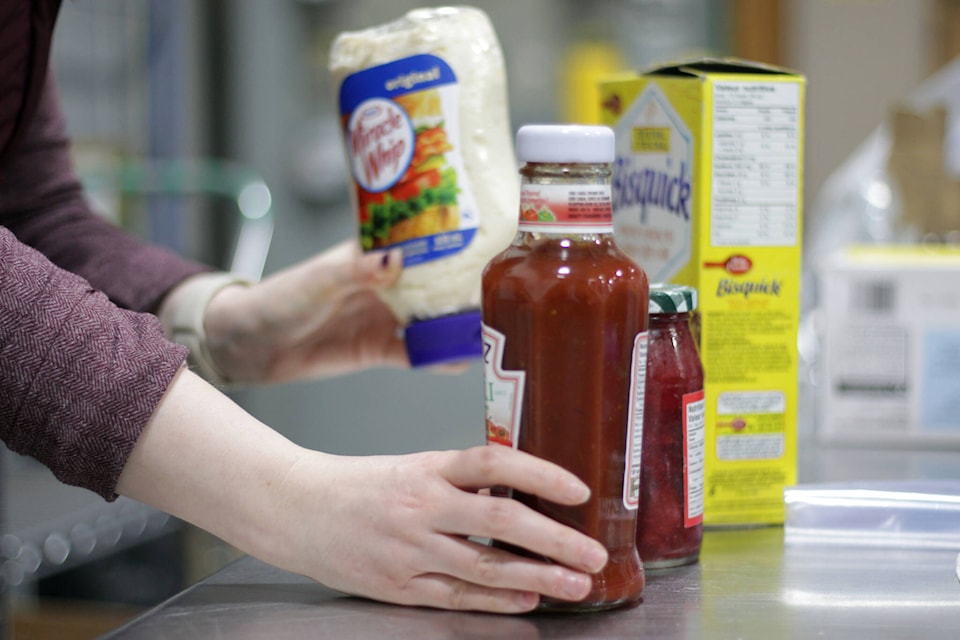A new poverty report card from Food Banks Canada shows B.C.’s unaffordable housing market is just one of the reasons why the province is barely passing.
Food Banks Canada released its inaugural Poverty Report Cards for the the federal government and provinces and territories Tuesday (Sept. 26).
B.C. is not doing well, earning a D+ overall based on four categories: Experience of poverty, poverty measures, material deprivation and legislative progress. The majority of governments received grades in the D-range
The report card called on much-needed action from all levels of government. It revealed that more than 42.6 per cent of people nationally feel financially worse off compared to last year, 18.4 per cent are experiencing food insecurity and almost 30 per cent are coping with inadequate living.
Food Banks Canada notes that B.C. has been a leader in poverty reduction since 2016 and overall has surpassed gains made at the national level. Despite that B.C. remains above the national average for poverty rates, in part because of the high cost of housing and consumer goods.
Poverty Reduction Minister Sheila Malcolmson said she doesn’t think the letter grade reflects the work the provincial government has done, “but it does reflect the hole that B.C. was in.”
B.C. is also among the worst nationally when it comes to sufficiency of government support. Food Banks Canada said that is “somewhat surprising” given the province’s higher assistance rates compared to the rest of the country.
Malcolmson added the report card “rightly raises” issues the government has been trying to address, pointing to B.C. increasing income-assistance rates four times since 2017, increasing minimum wage five times and implementing the province’s first Poverty Reduction Strategy.
She conceded that it “measures well how much pressure British Columbians are under.”
“The cost of living in B.C. is intensely high and global inflation and the housing price crisis has just made that worse, and so we are continuing to look at how we can better support people, especially people with multiple barriers and multiple vulnerabilities.”
The province’s unaffordable housing market – and the lack of affordable housing – is a “big factor” in the rising food-insecurity rates in the province. More than 70 per cent of food bank users are renters and about 40 per cent of residents are spending more than 30 per cent of their monthly income on housing costs, which earned the province a failing grade.
B.C. was one of three provinces with a large enough sample size to report on racialized communities, and comparatively, respondents said they are more likely to spend between 30 and 50 per cent of their income on housing.
Low wages are affecting almost 40 per cent of those in racialized communities making ends meet, compared to 30 per cent across the province.
Low-income B.C. residents are spending as much as 54 per cent of their income on fixed costs such as internet, groceries and transportation. Pairing that with housing, Food Banks Canada says there is little money left at the end of the month to feel financially secure.
Mental health is also playing a role in B.C.’s poverty rates, with nearly half of residents feeling worse off than the previous year while also feeling that addiction is not getting the attention it needs.
READ MORE: 174 people died from toxic drug supply in August, B.C. coroner finds
In the report card, Food Banks Canada has several recommendations, including that B.C. set the goal of bringing poverty to below the national rate in every category by 2026.
It also points to the province’s 2020 basic income report that had 65 recommendations of its own, asking that the province produce a results report by the end of this year.
The basic income report, Malcolmson said, was commissioned by her ministry and that work has now been rolled into the Poverty Reduction Strategy, which consultations have heard from more than 10,000 people with 80 per cent of them having direct, lived experience of poverty.
All of that is being built into the strategy, which Malcolmson said she is legislatively required to table in the house in spring of 2024.
“That work is really well underway.”
